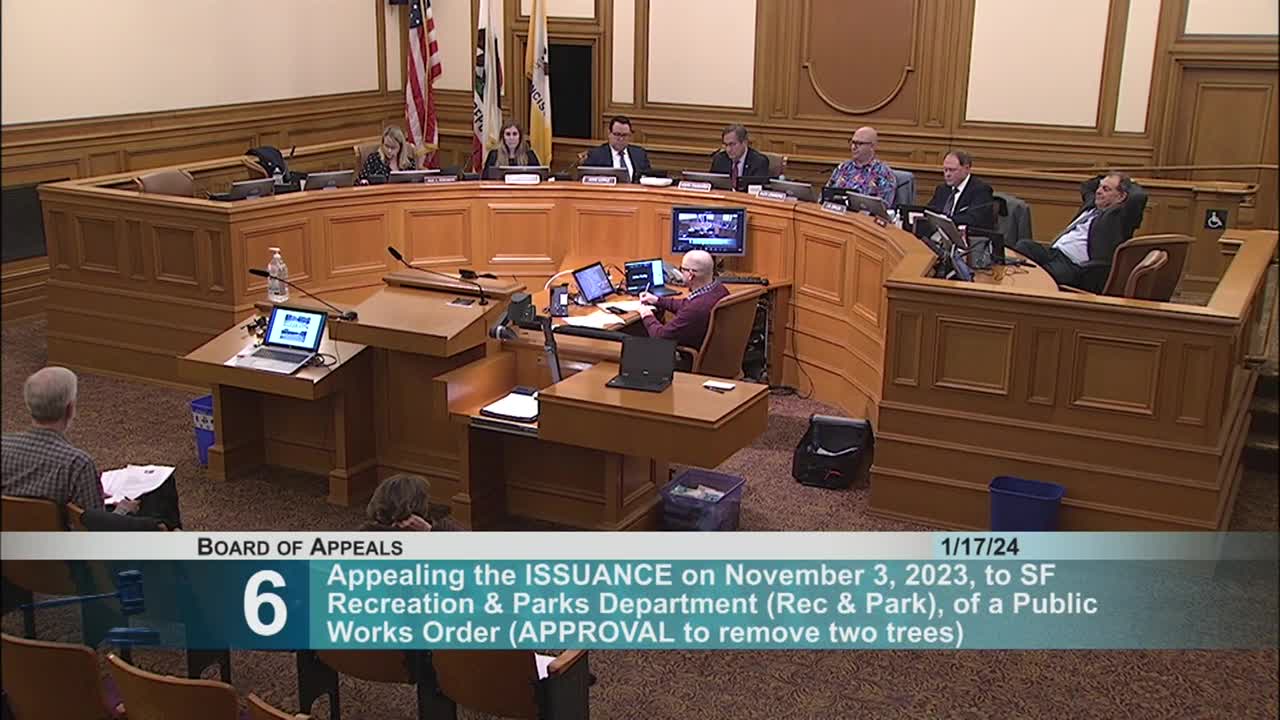Community appeals tree removal from Japantown cultural site in San Francisco
January 17, 2024 | San Francisco City, San Francisco County, California

This article was created by AI summarizing key points discussed. AI makes mistakes, so for full details and context, please refer to the video of the full meeting. Please report any errors so we can fix them. Report an error »

In a recent San Francisco government meeting, discussions centered around the proposed removal of two significant trees in Japantown, highlighting community concerns over cultural heritage and urban planning processes. The meeting revealed a clash between city planning initiatives and local sentiments, particularly regarding the impact of these changes on the community.
One of the key points raised was the classification of Post Street, which is not included in the Business Zero's high injury network, according to city maps. This classification has implications for the planned capital improvements in the area, as it suggests that the intersection has not been deemed a high-risk zone for accidents. Notably, there have been no fatalities reported at this intersection from 2014 to 2023, according to the city's health department records.
Community members expressed frustration over the lack of transparency and engagement in the decision-making process. One speaker emphasized the cultural significance of the cherry tree slated for removal, arguing that it holds historical value for the Japantown community. The speaker criticized the planning process, stating that there had been insufficient community input during public hearings, which were poorly attended by local stakeholders.
Another participant, Michael Nolte, voiced support for the replacement of the trees but underscored the need for more inclusive discussions about urban projects. He pointed out that many community members often feel sidelined in these processes, leading to decisions that do not reflect the desires or needs of the local population. Nolte referenced past projects, such as the Bus Rapid Transit (BRT) initiative on Gary Street, which negatively impacted local businesses, as a cautionary tale of inadequate community consultation.
The meeting concluded with a call for more robust engagement with the community to ensure that urban development respects and preserves cultural landmarks. As San Francisco continues to evolve, the balance between development and community heritage remains a critical issue, with residents advocating for their voices to be heard in shaping the future of their neighborhoods.
One of the key points raised was the classification of Post Street, which is not included in the Business Zero's high injury network, according to city maps. This classification has implications for the planned capital improvements in the area, as it suggests that the intersection has not been deemed a high-risk zone for accidents. Notably, there have been no fatalities reported at this intersection from 2014 to 2023, according to the city's health department records.
Community members expressed frustration over the lack of transparency and engagement in the decision-making process. One speaker emphasized the cultural significance of the cherry tree slated for removal, arguing that it holds historical value for the Japantown community. The speaker criticized the planning process, stating that there had been insufficient community input during public hearings, which were poorly attended by local stakeholders.
Another participant, Michael Nolte, voiced support for the replacement of the trees but underscored the need for more inclusive discussions about urban projects. He pointed out that many community members often feel sidelined in these processes, leading to decisions that do not reflect the desires or needs of the local population. Nolte referenced past projects, such as the Bus Rapid Transit (BRT) initiative on Gary Street, which negatively impacted local businesses, as a cautionary tale of inadequate community consultation.
The meeting concluded with a call for more robust engagement with the community to ensure that urban development respects and preserves cultural landmarks. As San Francisco continues to evolve, the balance between development and community heritage remains a critical issue, with residents advocating for their voices to be heard in shaping the future of their neighborhoods.
View full meeting
This article is based on a recent meeting—watch the full video and explore the complete transcript for deeper insights into the discussion.
View full meeting
